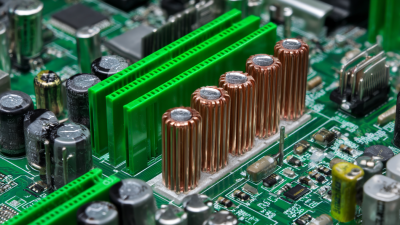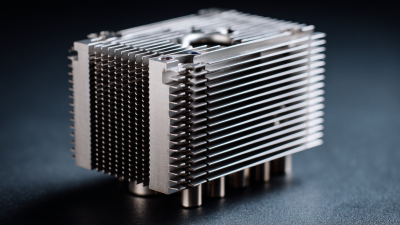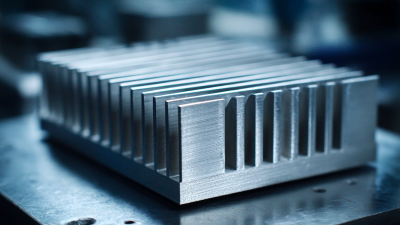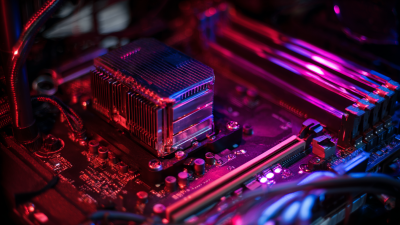Leave Your Message
In the world of gaming PCs, the demand for optimal cooling is paramount, and one critical component in achieving this is the RAM heatsink. Renowned thermal management expert Dr. Emily Chen notes, "A well-chosen RAM heatsink can significantly enhance the thermal performance of your system, ensuring that memory modules operate efficiently even under heavy loads." With gaming technology pushing the limits of performance, it becomes essential for enthusiasts and builders alike to understand the intricacies of selecting the right RAM heatsink.
Choosing a RAM heatsink involves considering various factors, including thermal conductivity, material type, and design compatibility. As gaming graphics and multitasking demands increase, the risk of overheating also rises, making it crucial to invest in high-quality RAM heatsinks. As Dr. Chen emphasizes, “Not all heatsinks are created equal; the right one can make a tangible difference in both performance and longevity of your components.” This introduction explores the key considerations and expert insights that will help you select the best RAM heatsink for your gaming rig, ensuring enhanced cooling performance and optimized system reliability.

When selecting a RAM heatsink for gaming PCs, several key features significantly influence cooling performance and overall system stability. First and foremost, the heatsink's material plays a crucial role; aluminum and copper are the most common materials, with copper generally offering superior thermal conductivity. According to a 2022 study by TechSpot, copper heatsinks can outperform aluminum by up to 20% in heat dissipation, making them a preferred choice for high-performance systems.
Another important factor is the design of the heatsink. Heatsinks with larger surface areas and optimized fin designs promote better airflow and cooling efficiency. A report from Gamers Nexus indicates that heatsinks with a wider base and taller fins can improve cooling capacity by as much as 30%, especially under heavy load conditions typical in gaming environments. Additionally, compatibility with RGB lighting and modular designs can enhance aesthetic appeal while ensuring that performance is not compromised. These considerations create a balance of functionality and style, meeting the desires of modern gamers.
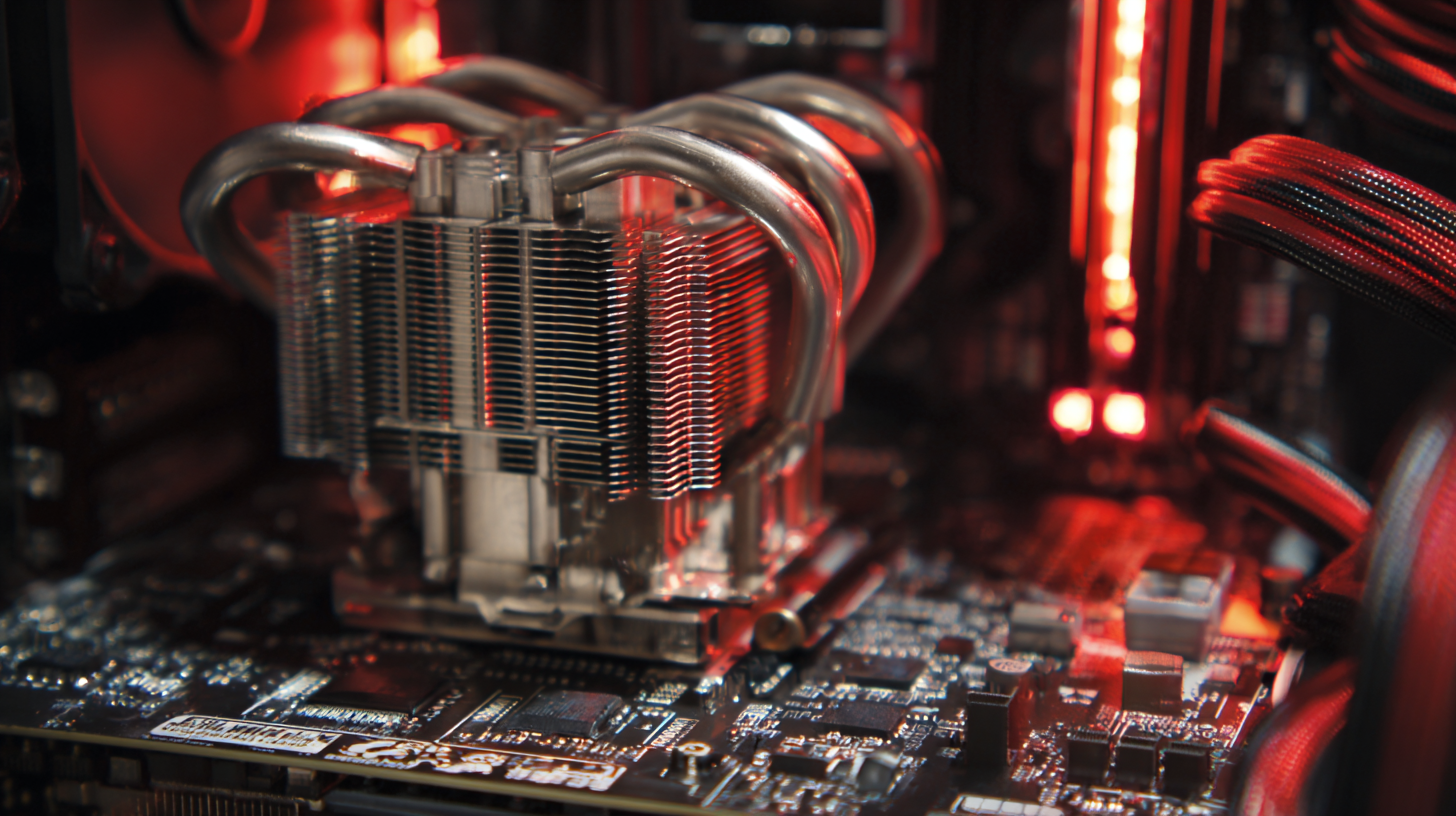 When it comes to RAM cooling solutions in gaming PCs, the debate between air and liquid cooling systems remains prominent among enthusiasts. Air cooling solutions typically utilize heatsinks made from aluminum or copper, which are effective at transferring heat away from RAM modules. According to a report by Tom’s Hardware, high-performance air coolers can reduce RAM temperatures by up to 25% compared to stock configurations. This substantial reduction can improve stability and longevity, especially during intense gaming sessions.
When it comes to RAM cooling solutions in gaming PCs, the debate between air and liquid cooling systems remains prominent among enthusiasts. Air cooling solutions typically utilize heatsinks made from aluminum or copper, which are effective at transferring heat away from RAM modules. According to a report by Tom’s Hardware, high-performance air coolers can reduce RAM temperatures by up to 25% compared to stock configurations. This substantial reduction can improve stability and longevity, especially during intense gaming sessions.
On the other hand, liquid cooling solutions have gained traction for their superior heat dissipation capabilities. By using a closed-loop system that circulates coolant, these setups can maintain lower temperatures even under extreme loads. Industry data from TechSpot indicates that liquid cooling can provide a reduction of up to 40% in RAM temperatures under peak performance conditions. However, these systems are often more expensive and can require more maintenance than their air-cooling counterparts. It is essential for gamers to weigh the benefits of each solution based on their cooling needs, budget, and willingness to invest in a more intricate setup for optimal performance.
The design of RAM heatsinks plays a crucial role in determining the thermal performance of gaming PCs. A well-engineered heatsink not only dissipates heat effectively but also contributes to the overall stability and longevity of the RAM modules. The materials used, such as aluminum or copper, can greatly influence heat conduction. Copper, with its superior thermal conductivity, is often favored for high-performance modules, enabling efficient heat transfer away from the RAM chips during intense gaming sessions.
Moreover, the physical design of the heatsink—including its size, fin structure, and airflow optimization—directly affects cooling efficiency. Tall and wide heatsinks with multiple fins are adept at maximizing surface area, promoting better airflow around the components. Additionally, compatibility with other cooling systems, like case fans or liquid cooling setups, is vital to enhance airflow and prevent heat buildup. By understanding these design elements, users can select RAM heatsinks that not only improve thermal performance but also support overall system stability during demanding applications.
When selecting the best RAM heatsink for gaming PCs, it's crucial to consider both performance and aesthetics. Leading brands such as Corsair, G.Skill, and Cooler Master are recognized for their high-quality heatsinks designed specifically for gamers. For instance, the Corsair Vengeance LPX series offers exceptional heat dissipation with aluminum heat spreaders, enabling overclocked setups to maintain stable temperatures even under heavy load. G.Skill's Ripjaws V series is another top contender, featuring a striking design and premium materials that not only enhance cooling performance but also bring style to your rig.
For optimal cooling performance, it is essential to ensure that the RAM heatsink you choose is compatible with your motherboard and memory arrangement. According to a recent industry report, optimal cooling can reduce memory temperature by up to 30%, significantly improving system stability and longevity. Additionally, consider choosing heatsinks with a low profile if you plan to use large CPU coolers or have limited space inside your case.
**Tips:** When installing RAM heatsinks, ensure that there is sufficient airflow around the RAM slots. Utilizing additional case fans can further enhance heat dissipation. Always check reviews and user feedback on specific models; the RAM heatsink market is replete with options, and real-world performance can vary widely from manufacturer claims.
| Model | Material | Height (mm) | Weight (g) | Cooling Technology | Compatibility |
|---|---|---|---|---|---|
| Model A | Aluminum | 40 | 200 | Passive | DDR4 |
| Model B | Copper | 50 | 250 | Active | DDR3, DDR4 |
| Model C | Aluminum & Copper | 45 | 230 | Hybrid | DDR4, DDR5 |
| Model D | Copper | 55 | 300 | Active | DDR4 |
When building a gaming PC, effective cooling is crucial, and choosing the right RAM heatsink can make a significant difference, especially when you're on a budget. Fortunately, there are several cost-effective options available that provide excellent cooling performance without breaking the bank.
 Heatsinks made from aluminum or copper are often affordable yet offer good thermal conductivity, making them ideal for budget-conscious gamers. Brands like Corsair and Crucial offer RAM heatsink kits that enhance air circulation while keeping costs low.
Heatsinks made from aluminum or copper are often affordable yet offer good thermal conductivity, making them ideal for budget-conscious gamers. Brands like Corsair and Crucial offer RAM heatsink kits that enhance air circulation while keeping costs low.
Additionally, look for heatsinks that come with pre-applied thermal paste for easier installation, or those that are compatible with RGB lighting, adding an aesthetic touch to your build. Many budget-friendly RAM heatsinks have a low profile design, ensuring that they won't interfere with larger CPU coolers or case configurations. By focusing on these factors and exploring the options available in the market, gamers can ensure their systems remain cool and stable during intense sessions without overspending.


